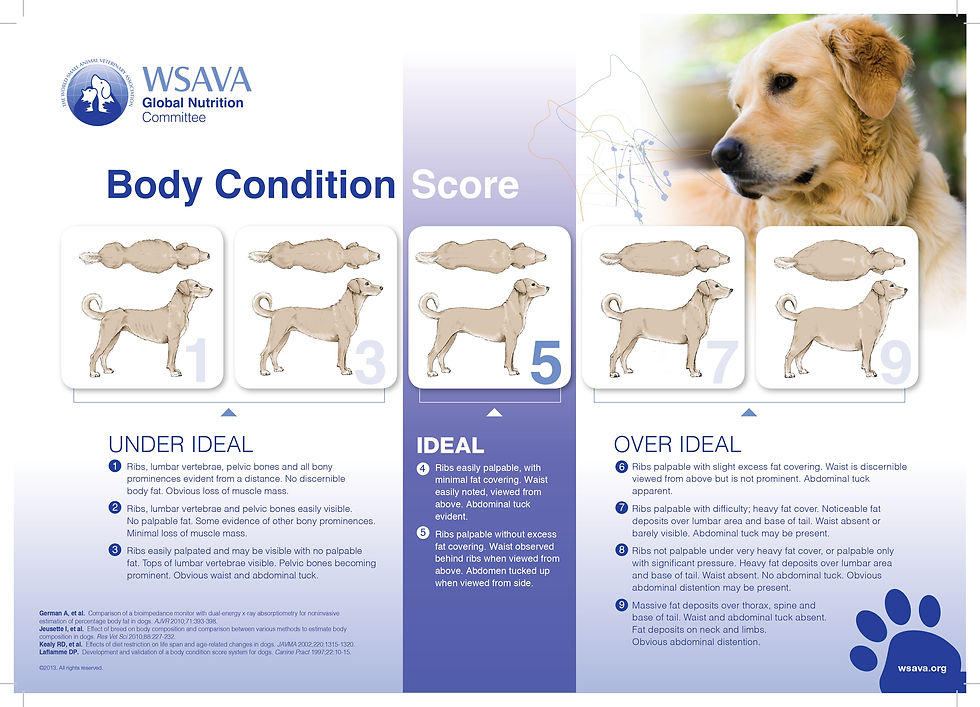
Such a common challenge that I hear from dog owners is that their dog won't take treats during training. While there are other kinds of rewards out there, food tends to be the most convenient for a number of reasons – it’s easy to access, it’s something you need to provide your dog with anyway (so you might as well use it for training!) and it allows you to get several repetitions from your dog within a short space of time.
I hear it all the time “my dog just isn’t food motivated”.. while some dogs may be naturally more foodie than others, there simply isn’t such a thing as a dog that isn’t food motivated because if they weren’t they wouldn’t be alive. Your dog does eat food in other situations right? They have to!
There are several reasons why your dog might reject food in training. Let’s explore the key factors and what you can do to change it.
1. Your Dog is Being Overfed in Everyday Life
If your dog is consistently overfed during regular meals, they might not be hungry enough to care about treats. Overfeeding can reduce your dog’s food drive, making them less motivated to work for treats during training. The thing is, the majority of dogs in western society are overweight but because it’s so common, well-meaning dog owners don’t realise it!
What to do: Measure your dog’s daily intake to ensure you aren’t overfeeding. Consider adjusting portion sizes at meals if you plan to use food rewards during training sessions. If you’re unsure about whether or not your dog is overweight, take a look at the Body Condition Score guide from the World Small Animal Veterinary Association below or talk to your own vet for advice.
2. You’re Feeding From a Food Bowl
Feeding exclusively from a food bowl might diminish your dog’s appreciation for food during training. Eating from a bowl can become boring. In the wild dogs would spend a large portion of their time seeking out food between sniffing it out, scavenging and hunting. When you put your dog’s food in a bowl you are wasting opportunities to give your dog a fun activity and maintain their interest in food.
What to do: Try feeding your dog during training sessions; scatter feed or use food toys such as a Snuffle Mat, Kong or other puzzle toy. Let them earn their food through work, making it feel more rewarding and engaging.
3. Your Reward Delivery is Boring
Dogs can lose interest in training if the reward delivery is monotonous. If you’re simply handing over the treat with no excitement, your dog might not find the reward worth the effort.
What to do: Mix up your reward delivery! Use a variety of techniques such as tossing the treat, letting your dog chase it, or hiding it for them to find. Keep reward time exciting, so your dog remains engaged. See this video of me doing a “Food Party” with Bowie:
4. Eating is Uncomfortable
Sometimes, a dog’s refusal to take food is linked to a physical issue. Dental problems, upset stomach, or pain while chewing can make food less appealing during training.
What to do: Ensure your dog’s health is in good condition by regularly checking their teeth and digestive health. If your dog consistently refuses food, a visit to the vet might be in order to rule out any underlying medical problems.
5. The Training Scenario is Overwhelming

An overly stimulating or stressful training environment can be too much for a dog to handle. If your dog is anxious or distracted by the surroundings, they might not take food, even if they are normally food-motivated.
What to do: Make sure your training environment is calm and controlled, especially when starting out. Begin in low-distraction environments and gradually increase the difficulty as your dog becomes more comfortable.
6. You’re Expecting Too Much Too Soon

If you’re introducing new concepts or exercises too quickly, your dog might get frustrated or confused. This can result in them not taking food, as they are too focused on trying to figure out what you want.
What to do: Break training down into smaller, manageable steps. Start by teaching easy-win behaviours instead of starting with something very complex. An example of an easy-win behaviour I like to teach is a Hand Target. See a video demo teaching this behaviour below! Ensure your dog understands each part of the process before moving on to something more difficult.
7. You’re Not Using the Right Reward
Not all dogs are motivated by the same type of food. Some dogs might find certain treats boring or unsatisfying, making them less likely to engage in training.
What to do: Experiment with different types of treats to find out what your dog loves most. Some examples of high-value treats are; cheese, chicken, hot dog or dog pate like this one from Atlas & Tail. Remember though, every dog is an individual and what your dog finds to be high value might surprise you! Try offering a variety of rewards to see what excites your dog.
Conclusion
If your dog isn’t taking food during training, don’t be discouraged! Identifying the root cause is the first step toward finding a solution. Whether it’s adjusting how you feed your dog, making training more exciting, or ensuring your dog’s good health, there are many ways to turn this challenge around. By being mindful of your dog’s needs and preferences, you can create a more rewarding and successful training experience for both of you.


Comments